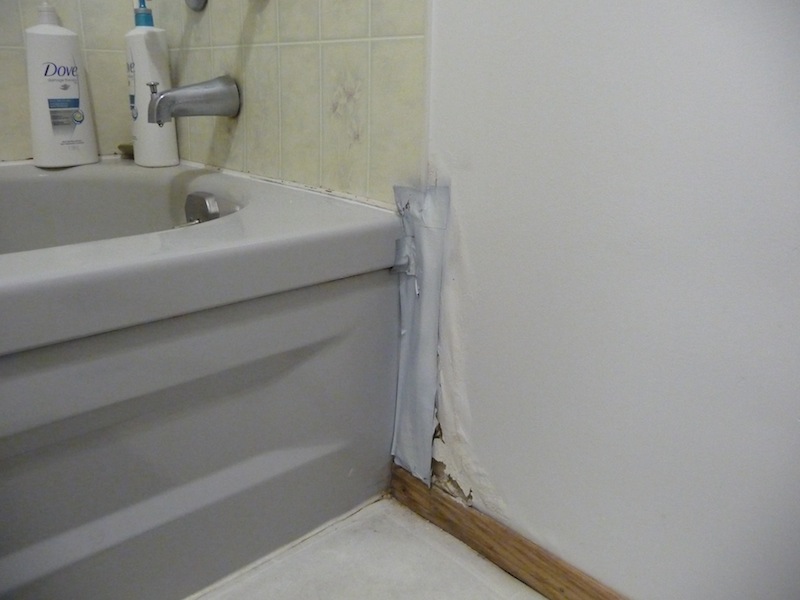Typical Causes of Water Damage in a Bathroom
Typical Causes of Water Damage in a Bathroom
Blog Article
What're your thoughts about How to Prevent Bathroom Water Damage?

The washroom is extremely susceptible for damp buildup and possible water damages as a result of the frequent use of water in it. This post supplies simple evaluation methods to assist identifying water damage hazards.
The regular use water in the shower room makes it exceptionally vulnerable for moist accumulation as well as prospective water damages. By checking it on a regular basis, you can minimize water relevant problems.
The adhering to collection of inspections is easy to perform and should be done once in every three months in order to keep your restroom in good shape and to prevent potential water damages caused by the bathtub, the shower, pipe joints and plumbing, sinks, cabinets, and the toilet
Do not neglect performing these inspections and be comprehensive while performing them. Keep in mind that these simple inspections can conserve you a great deal of cash by supplying early indicators for water damage
Sinks and Cabinets
Sinks and closets are revealed to wetness as well as humidity daily and also are typically forgotten. Examine frequently under the sink and on the countertop over it. Fix any type of drip in the trap as it might recommend drain problems. Browse the sink, slow draining pipes might suggest a blocked drainpipe. Change sink seals if they are broken or loose.
Bath tub as well as Shower
The shower as well as bathtub call for unique attention and also upkeep. Inspect the tiles and also replace if cracked. See to it that there is no missing out on grout in between the ceramic tiles. Inspect and also change cracked caulking at joints where the wall surfaces satisfy the floor or the bath tub. Blocked drains pipes as well as pipes troubles will prevent the tub from drying and also may indicate severe problems under the tub. Consult with an expert instantly to stop structural damages. Take note of discolorations or soft locations around the tub wall surfaces as they may show an interior leakage.
Plumbing
Signs for water damage are tough to discover since a lot of pipelines are set up inside the wall surfaces.
Pay special focus to flooring as well as walls wetness and spots as they might indicate an unseen plumbing problem. Inspect dampness levels in adjacent rooms also.
The Commode
The bathroom is an at risk water junction. Inspect the water lines and also search for leakages around the commode seat, in the hose pipe, and also under the water tank. If you discover any kind of signs of wetness on the flooring around the toilet, look for leakages in the toilet rim as well as container seals.
Be aware that hanging bathroom dish deodorants enhances the opportunities for obstructions.
How to Prevent Water Damage in Your Bathroom?
Water damage repair is an expensive, meticulous, and lengthy process. Unfortunately, bathrooms are the most susceptible rooms to water damage due to toilets, showers, and sinks. Pipes and fixtures wear out over time and are not immune to damage. But all is not lost, as there are ways to prevent water damage from occurring in your bathroom.
Check Your Plumbing
Nothing lasts forever, especially pipes, which can rust and begin leaking over time. You should periodically conduct pipe inspections and pay attention for any musty smells or water stains that may indicate you need water damage repair. Here are some things to check:
Frequently test valves for your toilet, shower, and sink to ensure they are properly working. Check faucet supply lines hidden under vanities and replace when needed. Replace cracked or deteriorating caulking along sinks, tubs, and showers. If you notice a clog in your sink, call in a professional. Since you can’t check the pipes in the wall, keep an eye out for stains, drywall bubbling, musty smells, and excess moisture; if the bathroom is on a second level, check the ceiling of the room directly below for these signs. Don’t Overwork Your Toilet
One of the most common reasons bathrooms need water damage repair is due to overflowing toilets. Save yourself the hassle of cleanup by being mindful and not pushing your toilet to extreme limits. If you have young children, it is especially important to keep an eye on them when they are in the bathroom and to teach them how to avoid clogging the toilet. Here are some more tips to help prevent your toilet from overflowing:
If you have a septic tank, only use septic-safe toilet paper Do not flush anything down the toilet besides toilet paper; items like diapers and sanitary napkins will clog the piping Pay attention to your toilet’s water level: If it’s low, it could mean it is partially clogged or that there is a crack in the toilet bowl Maintain Your Shower/Tub
Replace showers or tubs with cracks or other damage; even hairline cracks can allow water to seep in and cause damage. Grout and caulk help prevent water from seeping into walls and floors, so repair them if they are chipped, cracked, or deteriorating. Replace torn shower curtains or shower doors with seals that no longer work. Dry the floor and drain water from the tub immediately after use to prevent damage from sitting water. https://www.alure.com/home-improvements-blog/resources/how-to-prevent-water-damage-in-your-bathroom

I came across that piece of writing on How to Fix a Water Damage Bathroom when doing a lookup on the web. Make sure you take the opportunity to promote this post if you appreciated it. I am grateful for your time. Visit us again soon.
Information Here Report this page